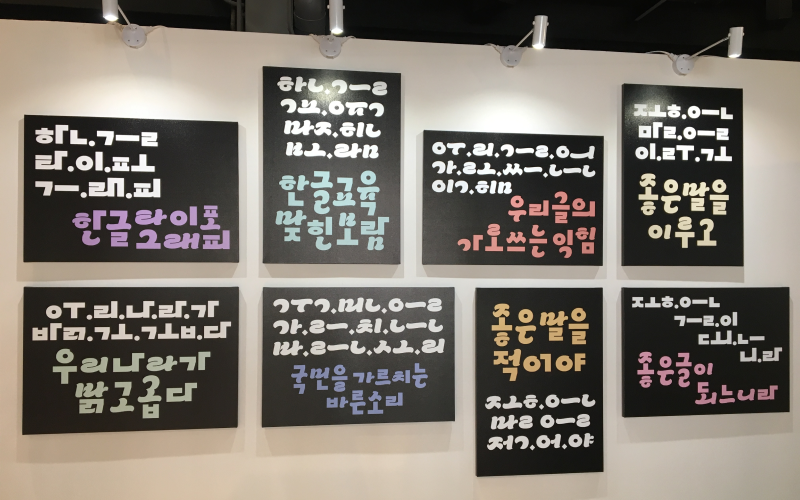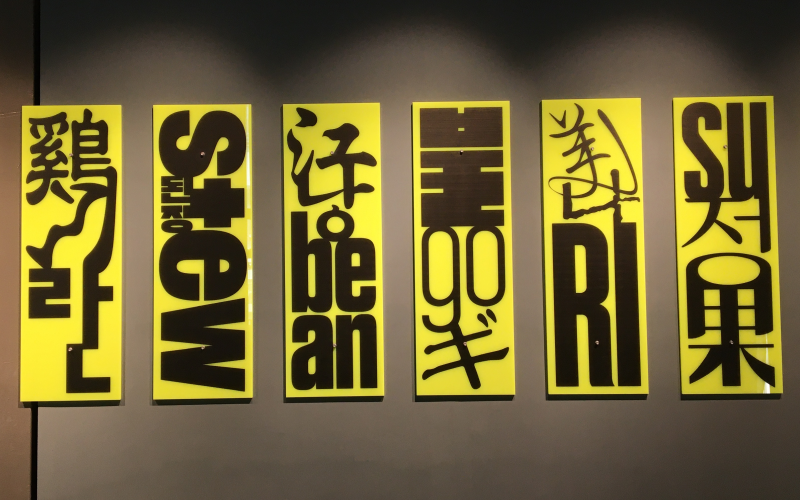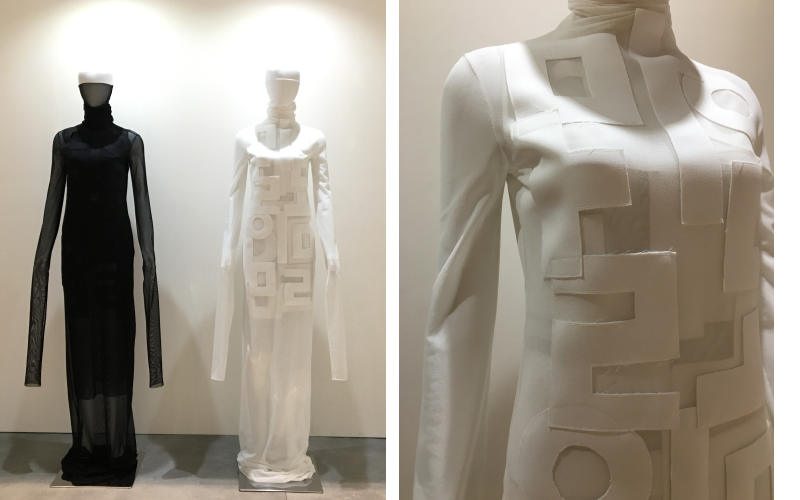- 한국어
- English
- 日本語
- 中文
- العربية
- Español
- Français
- Deutsch
- Pусский
- Tiếng Việt
- Indonesian
Photos = Jadiene Shani Teng
The exhibition "Reinterpreting Hangeul in the Modern Era" hosted by the Korean Cultural Centre in Hong Kong and National Hangeul Museum in Seoul runs through Jan. 27.
During my visit to the exhibition on Nov. 24, I saw a diverse showcase of works that provided a fresh perspective on integrating Hangeul into contemporary art and design. I was enchanted by the wide array of art featured, from visually striking typography and installations to innovative concepts such as augmented reality and fashion design. The large-scale works presented Hangeul in a modern and eye-catching format accompanied by traditional Hangeul publications like editions of Hunminjeongeum, the original textbook for Hangeul, that raised my understanding of the Korean alphabet's styles.

"Forms of the Language" by Han Dong-hoon
"Forms of the Language" by Han Dong-hoon experiments with unconventional linear writing styles and diverse fonts. Each of the eight panels shows a phrase written in a typical manner and an experimental linear writing style in which each letter is written separately in a horizontal manner.
Aside from this unfamiliar style, each panel has a different font ranging from the formal block type to those featuring rounded and fun-looking styles. This unconventional approach to Hangeul made me curious about its presentation.

"ME뉴板" by You Hyun-sun
"ME뉴板" by You Hyun-sun displays food names in a multilingual menu board style. This array of boards, reminiscent of menu displays at restaurants or hawker stalls, presents food names in Korean, English and Chinese. Being multilingual, I was immediately drawn to these boards for their fusion of cultures. These displays not only utilize Hangeul to underscore Korea's impact on both Eastern and Western cultures but also encapsulate the essence of translating food names to convey accuracy amid the global boom in Korean cuisine.

Untitled work by Park Choon-moo
An untitled work by Park Choon-moo integrated Hangeul into fashionable outfits. From a distance, his work might appear as a stylish ensemble but a closer inspection shows the letters of the word "Malmoi" intricately woven into each piece of clothing. The use of Hangeul as a pattern on clothing demonstrates its potential to extend beyond traditional mediums like publications and visual arts, showcasing its integration into various fields such as fashion design.
Aside from the artworks mentioned above, live events such as Kim Hyun-jin's "Hangeul Extravaganza" and Lee Ye-sung's "Augmented Ttakjibon" added interactive dimensions to the exhibition, demonstrating the versatility and cross-cultural impact of Hangeul. The curated collection highlighted the potential of Hangeul's integration into diverse formats that transcend traditional boundaries.
msjeon22@korea.kr
*This article is written by a Korea.net Honorary Reporter. Our group of Honorary Reporters are from all around the world, and they share with Korea.net their love and passion for all things Korean.